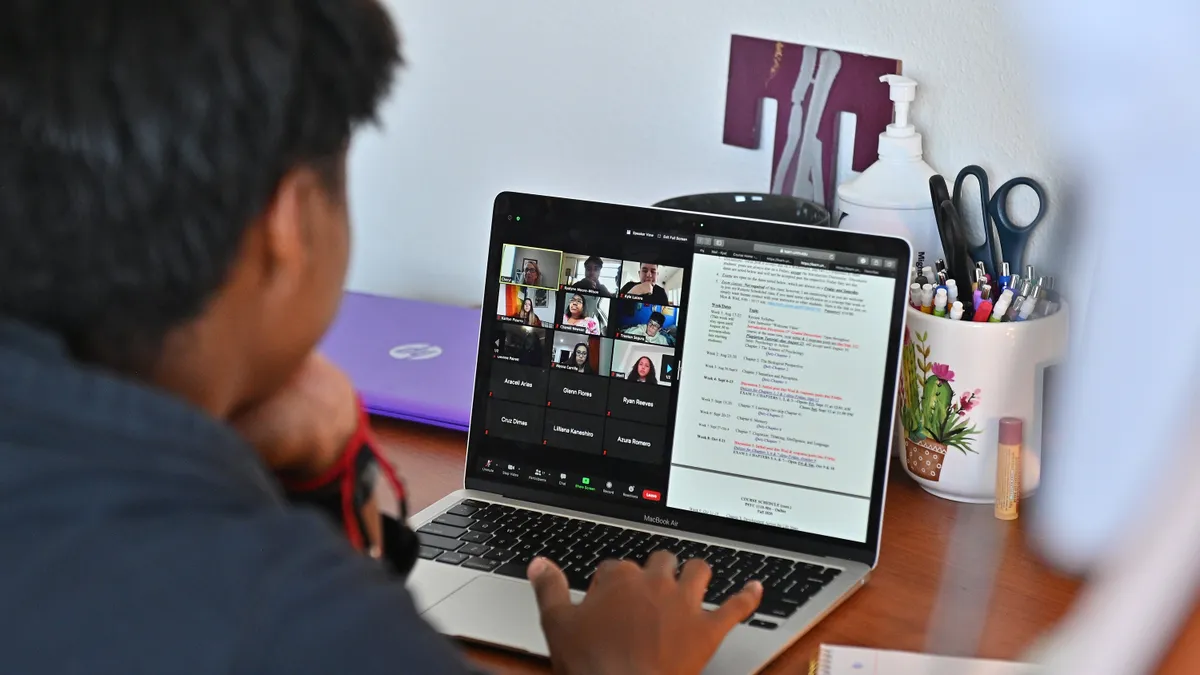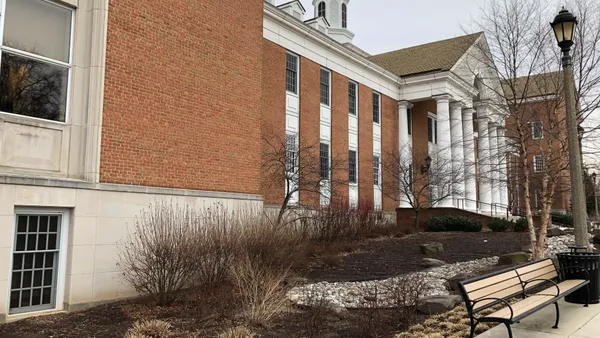Danette Howard is senior vice president and chief policy officer at the Lumina Foundation.
As colleges and universities prepared for the fall semester, administrators, faculty, and staff had many discussions around what it will take to return to "normal" — the way things were before the COVID-19 pandemic.
For some, back to normal means suspending online instruction. Despite low vaccination numbers among its students, Wofford College in South Carolina was among the colleges that decided to hold all in-person classes; no remote learning options were available to students. Cornell University followed suit, announcing that in-person teaching is "essential" and that any requests for remote instruction will be denied. Boston University suspended its Learn from Anywhere program, a hybrid approach it began during the pandemic. In announcing the change, a headline in a university publication proclaimed, "Coming This Fall for BU: Nearly Normal."
As cases of the virus's Delta variant surged in states like Texas, which had one of the nation's highest COVID-19 transmission rates, higher education institutions like the University of Dallas, University of Texas at San Antonio and Rice University temporarily shifted to online classes. Thousands of colleges across the nation issued vaccination mandates in a bid to ensure safe in-person learning. Rutgers University, which was among the first institutions to issue a vaccine mandate, also requires students to wear face coverings in classrooms, common areas and libraries. Some colleges, including Quinnipiac University, announced various penalties — from fines to restrictions on email, WiFi and campus housing — for unvaccinated students.
These attempts to return to normalcy are certainly appealing, especially after a year and a half of uncertainty caused by the pandemic. Ultimately, though, they are too limited — even misguided. Instead, we should seize this opportunity, a crossroads of sorts, to permanently restructure the college learning experience into one that meets the complex needs of today's students and prepares them for an increasingly remote workforce.
COVID-19 has underscored a critical fact: The traditional college experience no longer meets the needs of most students. That's a significant shift that we at Lumina Foundation have been addressing for some time.
According to our latest research, nearly 40 percent of today's college students are 25 years or older, 46 percent are first-generation college-goers and 42 percent are students of color. Also, 64 percent of college students work — 40 percent of them full time — and 24 percent have children or other dependents. The stereotypical image — a high school graduate heading straight to college, relying on parents to pay tuition — applies less and less.
The traditional college experience no longer meets the needs of most students.

Yet over the decades, the college experience hadn't changed much — until COVID-19 hit. The pandemic revealed startling racial and socioeconomic disparities in students' ability to learn in a fully online environment, forcing educators and government leaders to innovate to address the shortcomings. According to a recent Pew Research study, 80 percent of White adults reported owning a desktop or laptop computer, compared to 69 percent of Black adults and 67 percent of Hispanic adults.
Discrepancies for internet access were similar: 80 percent of White adults reported having a broadband connection at home, compared to 71 percent of Black adults and 65 percent of Hispanic adults. Across the nation, higher education institutions and philanthropic organizations partnered to ensure students were equipped with the technology they needed for online instruction. The federal government also made strides to support internet access under the Emergency Broadband Benefit program, and low-income college students who received Pell Grants were among eligible groups.
During the pandemic, many colleges and universities also stepped up to support students, recognizing that many of them needed mental health services, food, and child care to cope with the trauma and disruption caused by the pandemic.
Moreover, hundreds of colleges and universities dropped the SAT and ACT as requirements for admission — a move that, for some, has increased the diversity of incoming classes. The University of California, for example, announced that 43 percent of its freshman class is made up of underrepresented racial and ethnic populations — the largest percentage in its history.
Hybrid learning at the college level allows students the flexibility to manage work and studies.

All of these initiatives, launched during a crisis, sought to address challenges that have long confronted many of today's college students. While they can't erase decades of deeply rooted inequities, which will continue long after COVID-19 infection rates drop, they represent significant steps in removing barriers.
Some educational institutions — at the high school and college levels — also are studying the benefits of hybrid learning as a long-term solution. According to a survey of K-12 school district leaders, about 20 percent had adopted, planned to adopt, or were considering adopting virtual school as part of their district offerings after the end of the COVID-19 pandemic.
Hybrid learning at the college level allows students — many of whom are working 20 to 34 hours a week, according to the National Center for Education Statistics — the flexibility to manage work and studies.
Online education is particularly attractive to Black and Hispanic families, according to Sallie Mae's 2021 How America Pays for College report. Of the families surveyed, 68 percent of Black respondents and 60 percent of Hispanic respondents gave positive ratings to online learning, compared with 55 percent of White respondents. The report also found that 70 percent of Black families and 54 percent of Hispanic families say their students are equally able to learn new material online and in person, compared with 46 percent of White families. However, those benefits were not available for some students of color: 28 percent of Black respondents and 20 percent of Hispanic families said they lacked access to all the tools and technology needed for online learning.
As some students and families pointed out, online learning can be a more welcoming environment than in-person classes on predominantly White campuses — where students of color may face racism, microaggressions and feelings of isolation.
As a whole, the developments prompted largely by the pandemic have demonstrated the need to ask hard questions about how to ensure the success of all students. We must pledge that all students, no matter their background, ethnicity or race, have the tools to succeed in higher education — and in a workforce that is becoming increasingly diverse and where most good jobs will continue to require some learning beyond high school.



















